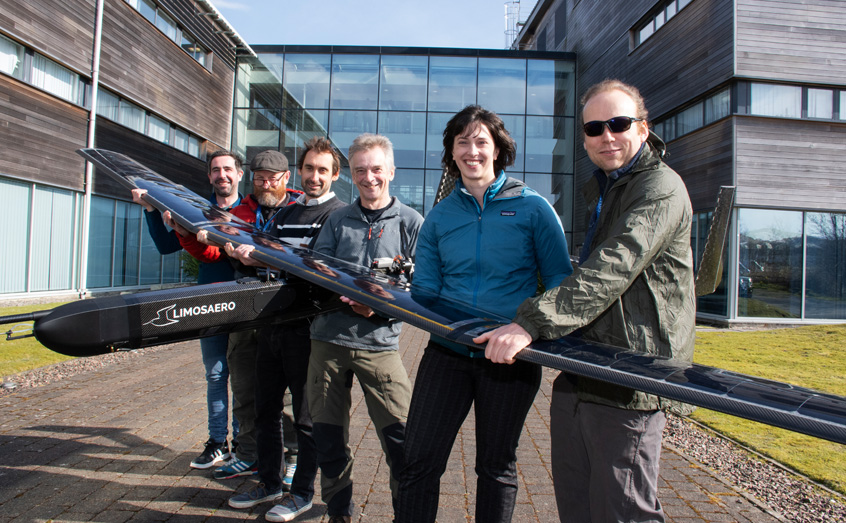SAMS news room
High hopes for solar-powered drone tested at SAMS

The company behind a unique solar-powered drone, capable of flights of up to 12 hours, has carried out testing in airspace near Oban.
Limosaero developed the sub-18 kilogram aircraft to conduct surveys at low to medium altitudes – less than 10,000 feet – over a longer period of time than electric drones, but needed a site in which to test new capabilities.
The company sought the support of the Scottish Association for Marine Science (SAMS), given its proximity to Oban Airport, and the expertise within its Scientific Robotics Academy.
Limosaero co-founder Dr Hilary Costello said: “We wanted to test applications that are useful in marine and environmental science and we needed an organisation to support us, so SAMS seemed an obvious choice.
“Having the Scientific Robotics Academy means that SAMS understands drone technology but, crucially, the applications that are possible with drone technology. We’re working on use cases, such as measuring particulates from ship fuel, the spread of invasive species around the coast, and collecting atmospheric data to improve weather forecasting.
“Both SAMS and Oban Airport have been incredibly supportive in enabling test flights from the airport.”
Dr Costello and co-founder Dr Graham Spelman met while studying at the University of Cambridge and started the company five years ago. There has been increasing interest in solar-powered drones as components become more reliable and affordable.
The company name, Limosaero, comes from Limosa laponica, the bar-tailed godwit, which holds the record for non-stop flight, flying for 11 days between Alaska and New Zealand.
Dr Phil Anderson from SAMS’ Scientific Robotics Academy said: “We are extremely interested in the applications of a novel drone like Limosaero. During the trials at Oban Airport, the aircraft tested three scientific payloads, a monitor for assessing fuel use in Arctic shipping, a multispectral camera for mapping invasive species in Scotland and a turbulence probe for estimating the wind energy being absorbed by floating offshore windfarms.
“By hosting companies like these, we can highlight the expertise and fantastic facilities we have at SAMS, showcasing the Oban area as the ideal test ground for new aerial systems and, not least, get a sneak preview of the science we could achieve in the near future.”
